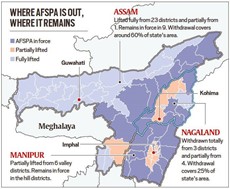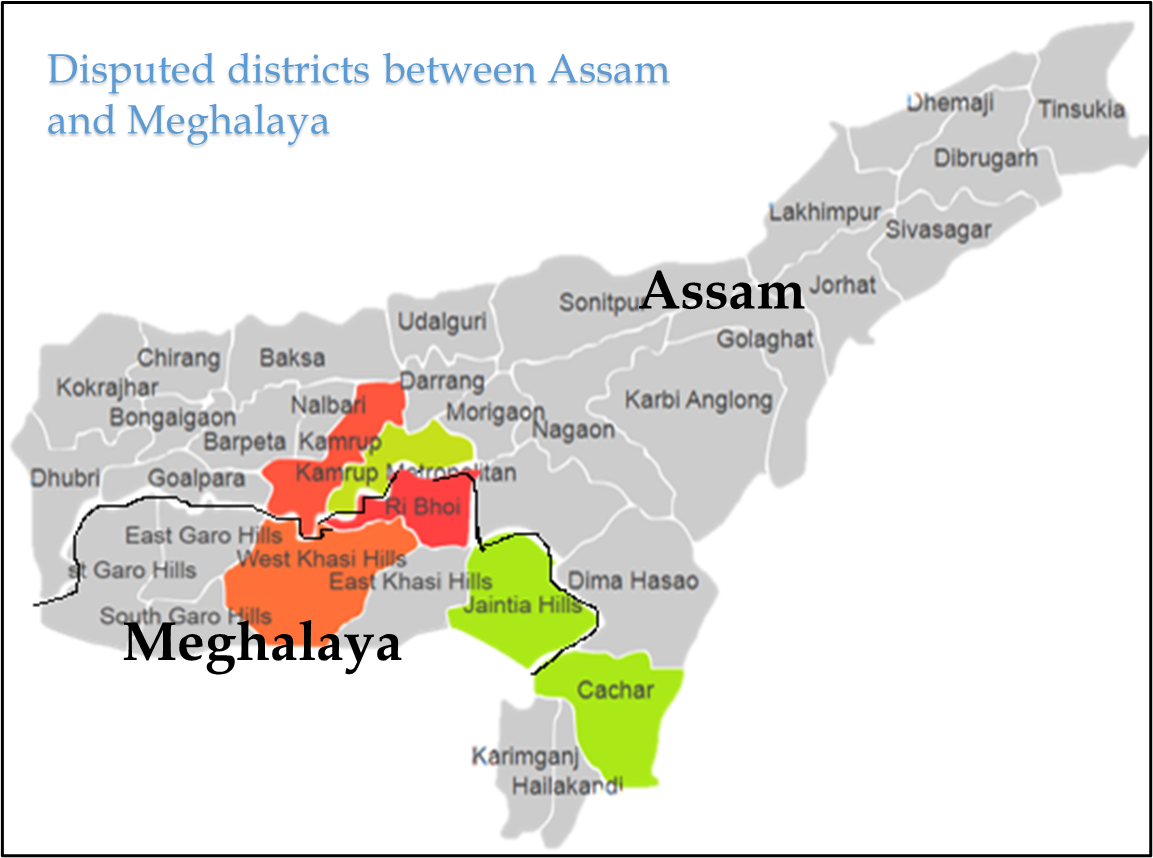Tuesday, 8th March 2022
Back to school campaign
In News
Government to launch campaign to bring back girls who dropped out of school
About the News
- A UNICEF survey of 50,000 Indian adolescents during the COVID pandemic has reported that while 90% of respondents were currently enrolled in school, a third of them knew of at least one girl who had dropped out.
- In an attempt to bring them back, the Ministry of Women and Child Development (MoWCD), in partnership with the Ministry of Education and UNICEF has recently launched a landmark back-to-school campaign to bring back out of school adolescent girls in India to the formal education and/or skilling system.
- The campaign will be rolled out under the umbrella of MoWCD’s Beti Bachao Beti Padhao initiative by targeting more than 400,000 out of school adolescent girls as primary beneficiaries.
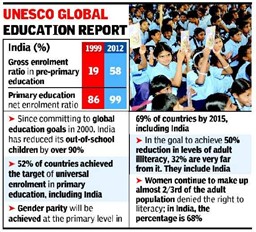
What are the various components of the campaign?
- Enhancing enrolments: The campaign has been launched with the objective of enhancing enrolment and retention of girls between 11-14 years of age in school.
- Saksham Anganwadi scheme: Launch of new scheme under which girls under 11-14-year-old will no longer receive anganwadi support, and the focus will shift to 14-18-year-olds.
- Mapping: Anganwadi workers will map the number of girls in each district and the list would be shared with the Education Department to ensure that each girl is enrolled either directly in the school system or in vocational training programmes, skill centres or open schooling.
- Outreach: Over 400 districts across all states will be funded under Beti Bachao Beti Padhao Scheme for outreach and awareness generation at grassroot level.
- Community sensitization: Government will take steps to sensitize communities and families to enrol adolescent girls in schools, over and above the funding from Samagra Shiksha Abhiyan.
- Incentives for Anganwadi: Anganwadi workers (AWWs) will be incentivised ranging from ₹500 to ₹1000 for counselling and referring out of school adolescent girls.
- Comprehensive system: The initiative will be built on the existing schemes and programmes like Schemes for Adolescent Girls (SAG), Beti Bachao Beti Padhao (BBBP) and National Education Policy (NEP) to work on a comprehensive system for out of school girls.
Why is it important?
- Empowerment: There is need to work with women and girls and commits to make sustained investment in health, education, protection, skill building including financial literacy, while empowering young women and girls, and promoting gender-equitable attitudes and practices among India’s children and youth.
- Comprehensive ecosystem: Campaign will help ensuring an integrated education services to create an inclusive environment and infrastructure for education.
- Covid impact: In the light of the last two years of pandemic, it becomes imperative for Ministry of Education to prioritize girls’ enrolment and systemically leverage support for girls’ enrolment and retention in school, with a focus on supporting girls transitioning into secondary education and completion.
- Realising potential: Education for girls not only fulfils their right to learning and finding better opportunities in life and work, but it also contributes to building thriving and resilient societies that give all people – including boys and men – the opportunity to realize their full potential as individual and citizens of the world”.
- Filling the gap: In 2018-19 alone, there were 88 lakh girls aged 11-14 years who were part of the Scheme for Adolescent Girls (SAG) in anganwadis, but this had dropped to 5.03 lakh by 2021. With the new Saksham Anganwadis set to pivot their focus to 14-18-year-olds from this year, it becomes imperative to ensure that the four-lakh remaining 11-14-year-olds are absorbed by the school system.
Sources:
- Campaign to bring back at least four lakh girls who dropped out of school:
- Ministry of Women And Child Development In Partnership With The Ministry Of Education and UNICEF Launches Campaign ‘Kanya Shikhsa Pravesh Utsav’To Bring Back Out of School Adolescent Girls To The Formal Education:
- India made big gains in child education: UN:
The Net Neutrality Debate
In News
Reliance Jio and Vodafone Idea are backing a proposal to regulate content delivery networks (CDNs), which are used by global big tech companies to host data locally, reigniting the net neutrality debate in India.
About the News
- The 2017 Draft Recommendations on Net Neutrality by the Telecom Regulatory Authority of India (TRAI) had said that CDNs should be kept outside the scope of any net neutrality regulation.
- This was done since it was contended that
- CDNs reduce latency and congestion and improve the overall efficiency in the delivery of traffic,
- it was not a consumer-based offering - there is no direct link with end-user and
- CDNs do not slow down other applications.
- This has fomented the net neutrality debate again as Reliance Jio and Idea Vodafone have backed a proposal to regulate content delivery networks.
- The companies maintain that CDNs need regulatory re-examination as internet companies start to tie up with specific Internet Service Providers (ISPs) to deliver higher quality services to certain groups of customers.
- On the other hand, industry bodies such as the National Association of Software and Services Companies (NASSCOM) and US India Business Council (USIBC) counter stating that the CDN market is currently growing and regulator should adopt a cautious approach.

What are Content Delivery Networks?
- A Content Delivery Network (CDN) is a geographically distributed network of servers and their data centers that help in content distribution to users with minimal delay or low latency.
- CDN services are essential for businesses which rely on delivering massive amounts of data rapidly to end users on the internet, like search engines (such as Google) OTT content providers (Netflix et al.), e-commerce companies, banking and financial companies, among others.
- All these businesses need to ensure acceleration of their content delivery, availability of services, scalability of resources, and security of web applications.
- CDN service providers have deals with telecom operators and internet service providers to host servers in their networks.
What is Net Neutrality?
- Net neutrality means service providers must treat all traffic equally, and not charge differently based on content.
- As per TRAI regulations on net neutrality, no service provider can offer or charge discriminatory tariffs for data services on the basis of content, except in some cases like reduced tariff for accessing or providing emergency services.
- CDNs are kept outside its purview.
- Thus far there is no legislation in place qua Net Neutrality in India except the certain Regulations and Policy.
Why the concern regarding CDNs?
- Dominant businesses may dictate terms for interconnection with smaller ISPs refusing them direct peering.
- Further large ISP players, who are also in CDN space, can create exclusive tie-ups with large content providers like OTT platforms companies, excluding other players from direct access on equal terms.
- If the access to CDNs is not on equal terms, the issue of net neutrality may arise whereby customers of preferred players may be provided with better quality CDN services.
- The exceptional growth of CDNs may create a non-level playing field between CDN players and telecom service providers.
Sources:
‘Donate-a-Pension’ Initiative
In News
Ministry of Labour and Employment has launched the ‘Donate-a-Pension’ program recently.
About the news
- The program has been launched under Pradhan Mantri Shram Yogi Maan-dhan (PM-SYM) to create and contribute to the pension of the support staff.
- PM-SYM is a voluntary and contributory pension scheme for unorganised workers.
- Under the initiative, citizens can donate the premium contribution of their immediate support staff such as domestic workers, drivers, helpers etc.
- The program will secure the future of Unorganised Workers through a small contribution
Understanding Pradhan Mantri Shram Yogi Maan-dhan (PM-SYM)
- What is it? The PM-SYM is a 50:50 voluntary and contributory pension scheme in which the beneficiary makes a stipulated age-specific contribution and the Central Government matches it.
- For example, if a person joins the system at the age of 29, he must give Rs 100 per month until he reaches the age of 60, at which point the Central Government would contribute an equal amount of Rs 100.
- The subscriber will get the assured monthly pension of Rs 3000/- with benefit of family pension.
- Eligibility under the scheme: The beneficiary of the scheme can be:
- Any worker of the unorganised sector mostly engaged as home-based workers, street vendors, mid-day meal workers, head loaders, brick kiln workers, agricultural workers, construction workers, beedi workers, handloom workers, audio- visual workers etc.
- Any worker whose monthly income is Rs 15,000/per month or less and belong to the entry age group of 18-40 years.
- The beneficiary should not be covered under New Pension Scheme (NPS), Employees’ State Insurance Corporation (ESIC) scheme or Employees’ Provident Fund Organisation (EPFO).
- He/she should not be an income tax payer.
- Enrolment agencies:The enrolment will be carried out by all the Common Services Centres. The unorganised workers may visit their nearest CSC along with their Aadhar Card and Savings Bank account passbook/Jandhan account and get registered themselves for the Scheme.
- Fund Management:PM-SYM is a Central Sector Scheme administered by the Ministry of Labour and Employment and implemented through Life Insurance Corporation of India and CSC eGovernance Services India Limited (CSC SPV).
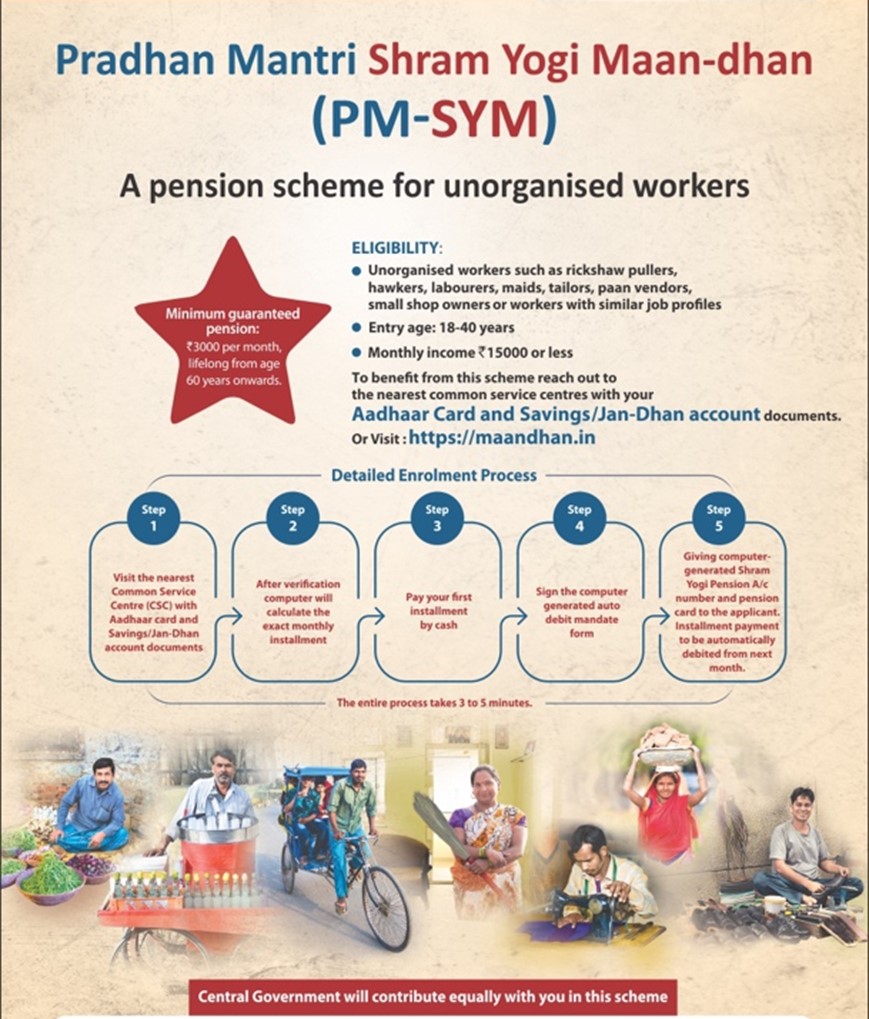
Source:
- Labour Ministry launches ‘Donate-a-Pension’ initiative: Check details
- Labour Ministry launches ‘Donate-a-Pension’ scheme. Check eligibility, other details
- Pradhan Mantri Shram Yogi Maan-dhan (PM-SYM)
Image source:
International Women’s day
On March 8, 1975, the United Nations celebrated its first official International Women’s Day. International Women's Day is celebrated on March 8 to mark the social, economic, cultural, and political achievements of women. The day also marks a call to action for accelerating women's equality. As per UNESCO, the first National Women’s Day was observed in the United States on Feb 28, 1909, which the Socialist Party of America dedicated in honour of the 1908 Garment worker’s strike in New York where women had protested against harsh working conditions. The roots of International Women’s Day, however, can be found in the labour movement, wherein IWD was first organised in 1911 by the early 20th century Marxist from Germany Clara Zetkin. The Charter of the UN, in 1945 became the first international agreement to affirm the principle of equality International Women’s Day 2022 theme is ‘Gender Equality today for a sustainable tomorrow’.
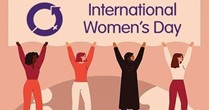
Sources:
Gender Equality Today for a Sustainable Tomorrow
In News
The theme of International Women’s Day 2022 is ‘Gender Equality Today for a Sustainable Tomorrow’.
About the News
- The theme for International Women’s Day, 8 March, 2022 (IWD 2022) is, “Gender equality today for a sustainable tomorrow”, recognizing the contribution of women and girls around the world, who are leading the charge on climate change adaptation, mitigation, and response, to build a more sustainable future for all.
- The theme aims to bring in global cooperation for
- gender-just climate solutions,
- increasing women’s leadership in the green economy,
- building women’s and girls’ resilience to climate impacts and disasters, and
- increasing the use of data on gender equality and climate.
Where do we stand on Gender Equality?
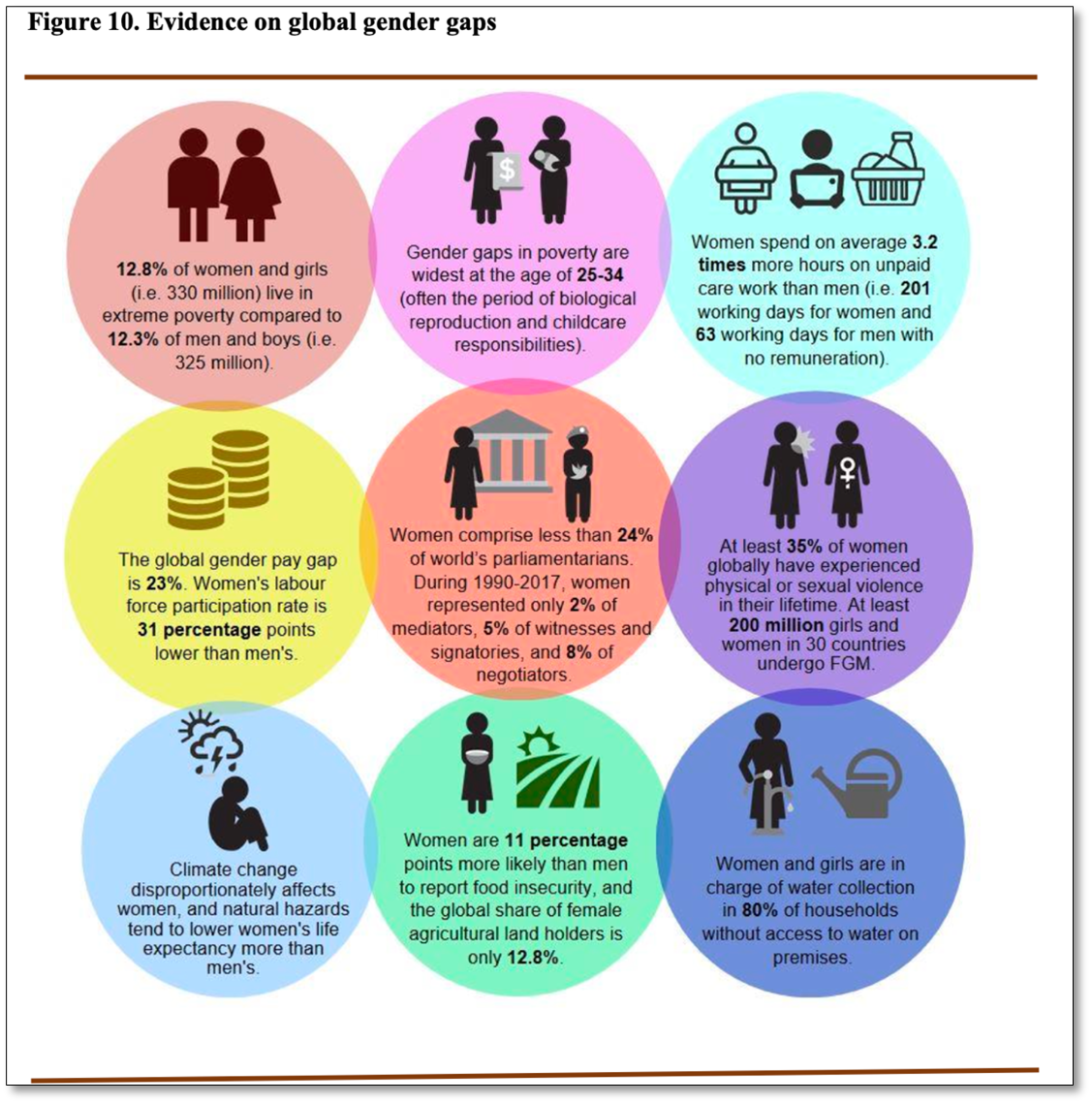
Gender Equality and sustainable development
- Gender equality refers to the equal rights, opportunities and outcomes for girls and boys and women and men. It does not mean that women and men are the same, but their rights, responsibilities and opportunities do not depend on whether they are born female or male.
- Gender equality is a goal in its own right enshrined in SDG 5 and it cuts across all 17 SDGs within the Agenda, which contains 45 targets and 54 indicators related to gender equality. It is found to have positive effects on promoting economic growth and labour productivity (SDG 8) and enhancing human capital through health (SDG 3) and education (SDG 4), which has important implications for poverty reduction (SDG 1).
- Gender equality is also critical for attaining food security (SDG 2) and addressing climate change (SDG 13), while also strengthening resilience to climate-related disasters and managing natural resources.
- Furthermore, providing equal opportunities for women’s participation in decision-making processes is beneficial for ensuring more peaceful and inclusive communities (SDG 16)
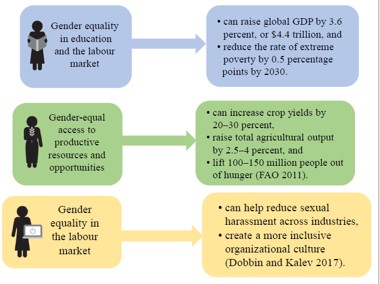
How is Gender Inequality leading to Unsustainable development and vice versa?
- Women and girls experience the greatest impacts of the climate crisis as it amplifies existing gender inequalities and puts women’s lives and livelihoods at risk. Across the world, women depend more on, yet have less access to, natural resources, and often bear a disproportionate responsibility for securing food, water, and fuel.
- Women are increasingly being recognized as more vulnerable to climate change impacts than men, as they constitute the majority of the world’s poor and are more dependent on the natural resources which climate change threatens the most.
- Women in rural areas in developing countries are highly dependent on local natural resources for their livelihood, because of their responsibility to secure water, food and energy for cooking and heating. The effects of climate change, including drought, uncertain rainfall and deforestation, make it harder to secure these resources.
- By comparison with men in poor countries, women face historical disadvantages, which include limited access to decision-making and economic assets that compound the challenges of climate change.
- Women are among those most vulnerable to the impacts of unsustainable practices and climate change, because they often have no independent income or land rights.
- Agriculture: Women farmers constitute about 45% to 80% of the food producers in developing countries. In Africa, their numbers go up to 90%. In the light of the current developmental model, they have been affected in the following manner:
- Traditional sources of food have become unpredictable and scarce.
- Food shortages and inflation have hurt women more as they are neglected in times of shortages.
- Livelihood of women engaged in agriculture has been threatened.
What can be done to ensure Gender Equality for Sustainable Development
- Mitigation and adaptation efforts should address gender-specific impacts of unsustainable development in the areas of food security, agriculture and fisheries; biodiversity; water; health; human rights; and peace and security.
- Public policies need to be rethought and redesigned using a gender- responsive approach. This implies taking into account different socially determined roles, responsibilities and capabilities of women and men, along with power relations and cultural settings in which women’s and men’s activities take place, while responding to their diverse needs and interests.
- In particular, to achieve inclusive and sustainable economic growth and full and productive employment (SDG 8), current models of economic growth need to integrate policies and programmes which: (i) provide good quality employment to all; (ii) improve women’s access to productive assets and resources, particularly in developing countries; (iii) remove discriminatory barriers that prevent women from participating in the labour market; and (iv) eliminate gender gaps in education.
- To tackle gender inequalities in the labour market and boost female participation, gender equality provisions should be supported by legislative and institutional frameworks that guarantee equal opportunities and rights; ensure equal pay, safety and security; and prohibit discriminatory practices such as lower pension ages for women and workplace harassment.
- Technological developments should take into account women’s concerns and utilise
- their knowledge and expertise, including indigenous knowledge and traditional practices.
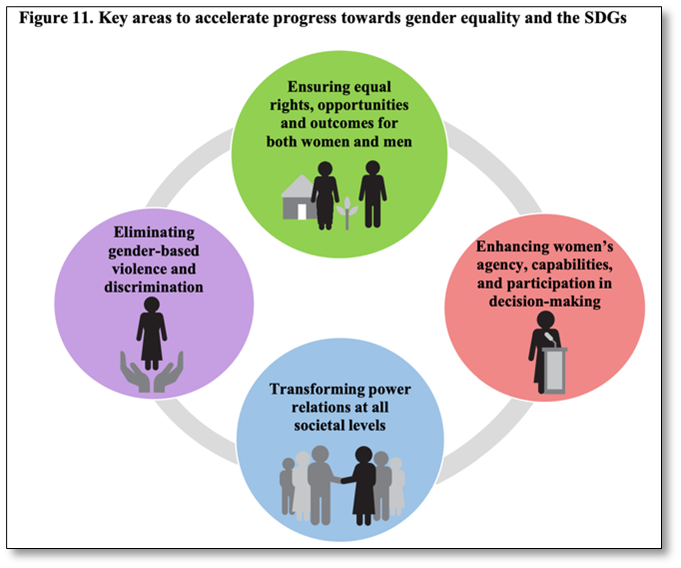
Question: Gender equality can lead to sustainable development. explain
Sources:
- In focus- International women’s day:
- International Women’s Day: Gender equality today for a sustainable tomorrow:
- Factsheet:
- What does gender equality look like today:
- The Wire: India Slips 28 Places in WEF's Gender Gap Index, Ranked 140th Among 156 Nations
- Why gender equality is key to sustainable development:
- GENDER EQUALITY AS AN ACCELERATOR FOR ACHIEVING THE SUSTAINABLE DEVELOPMENT GOALS:
White Holes
This is simulated image of White holes, which are theoretical cosmic regions that function in an opposite way to black holes. A white hole is a bizarre cosmic object which is intensely bright, and from which matter gushes rather than disappears. Just as nothing can escape a black hole, nothing can enter a white hole. White holes were long thought to be a figment of general relativity born from the same equations as their collapsed star brethren, black holes. More recently, however, some theorists have been asking whether these twin vortices of spacetime two sides of the same coin. To a spaceship crew watching from afar, a white hole looks exactly like a black hole. It has mass. It might spin. Physicists describe a white hole as a black hole's "time reversal”. While general relativity describes white holes in theory, no one knows how one might actually form.

Sources:
Copenhagen Climate Centre
- Context: UNEP has recently established Copenhagen Climate Centre in collaboration with United Nations Office for Project Services (UNOPS).
- The Copenhagen climate centre is a leading global research and advisory institution that aims to deliver compelling science in support of environmental decision making and climate action across the world (Paris Agreement and the SDGs).
- It will support countries in achieving a climate-resilient and low carbon future and to integrate climate priorities in national development planning.
- Through market development and innovative business models, it supports governments, cities, and the private sector to act on climate change.
- As a part of its tasks, the Centre has managed the production of UNEP's flagship reports on climate change- namely the Emissions Gap Report and Adaptation Gap Report, since 2011.
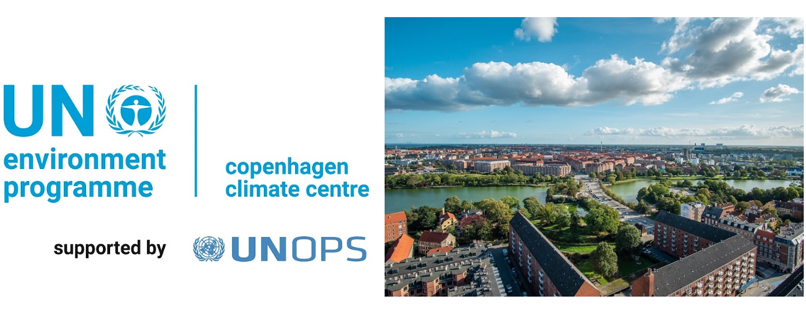
Source:
Image Source:
Village Defence Committees
- Context: The Union government is planning to re-establish village defence committees (VDCs) in Jammu with a changed nomenclature - ‘village defence groups’.
- Village Defence Committees (VDCs) are those that were first setup in the mid-1990s in the Chenab Valley area of Jammu and Kashmir for the self-defence of Hindus in remote hilly villages against militancy.
- They consist of villagers as well as police officers.
- Village defence committees (VDCs) will be re-established in Jammu in order to fight militancy, provide hi-tech weapons and ensure equal salary to its members
- They are credited for fighting the terrorists and stopping migration of locals from peripheries in the wake of several killings by the terrorists, especially in 2001.
- However, of late, VDC members have been facing around 160 cases related to several crimes, including kidnap and rape.
- It has also been criticized for alleged partisan recruitment, with members from a particular community getting recruited more than the other.
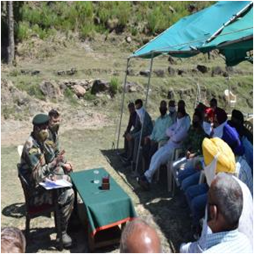
Source:
- Armed village defence groups to be re-established in Jammu: BJP
- Village Defence Committees revival and empowerment will boost Jammu and Kashmir’s security grid
Image source:
Project ARYA
- Context: Assam Governor has stated that ICAR has started working in the project – ARYA.
- ARYA (Attracting and retaining youth in agriculture) is an ICAR initiated programme that aims to attract youth of the country towards agriculture.
- Objectives:
- To attract and empower the Youth in Rural Areas to take up various Agriculture, allied and service sector enterprises for sustainable income and gainful employment in selected districts.
- To enable the Farm Youth to establish network groups to take up resource and capital-intensive activities like processing, value addition and marketing.
- To demonstrate functional linkage with different institutions and stakeholders for convergence of opportunities available under various schemes/program for sustainable development of youth.
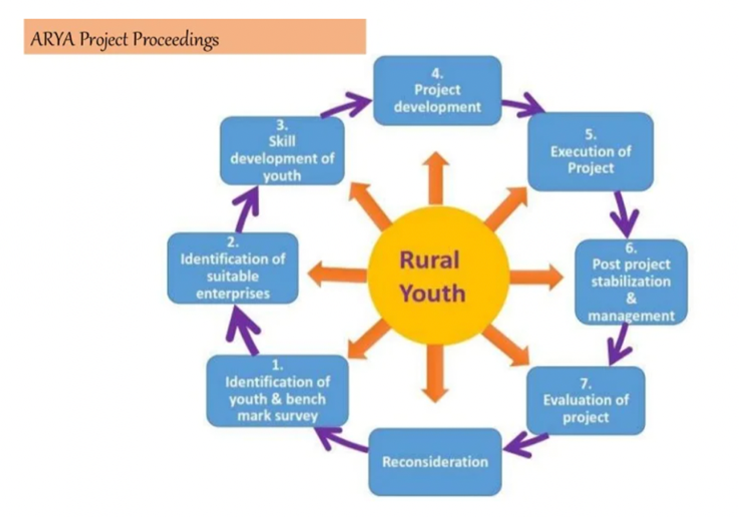
Source:
- ICAR starts work on project ARYA: Assam Governor Prof Jagdish Mukhi
- Attracting and retaining youth in agriculture
Image source:
Kanya Shiksha Pravesh Utsav
- Context:The Ministry of Women and Child Development, in collaboration with the Ministry of Education and UNICEF has launched Kanya Shiksha Pravesh Utsav recently.
- It is alandmark campaign to reintegrate out-of-school adolescent girls in India into the formal education and skilling system.
- It aims to increase the enrolment and retention of the number offemales aged 11 to 14 in school.
- The project focuses on a complete system for out-of-school girls bybuilding on existing schemes and programmes such as schemes for Adolescent Girls (SAG), BetiBachaoBetiPadhao (BBBP), and National Education Policy (NEP).
- The campaign will be implemented as part of the MoWCD’s BBBP project, with the primary beneficiaries being over 400,000 out-of-school adolescent girls.
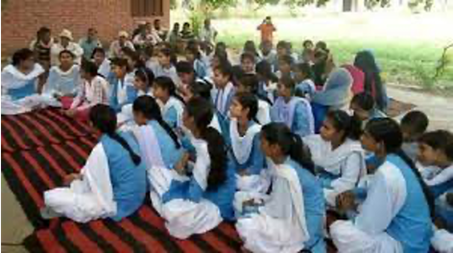
Source:
- Kanya Shiksha Pravesh Utsav- a campaign for the enrollment of girls into formal education
- The webcast of Kanya Shiksha Pravesh Utsav
Image source:
How invasion of Ukraine could transform nuclear landscape of Asia: IE
Essence: The editorial talks about renewed efforts to garner support in Asia and Europe in the face of Russian assault on Ukraine. Highlighting the significance of nuclear weapons as a deterrent, many nations across the world have started to build defense systems and forge partnerships which could prevent hostilities. This is a learning for Japan, South Korea, etc. who are leaning on USA for extended deterrence for themselves and Taiwan. Similarly, Australia and Taiwan are developing nuclear-powered submarines to counter Chinese influence.
Learning from the onslaught faced by Ukraine, the European economies like Germany have restarted to strengthen their security. Countries like Netherlands, Belgium, Italy, Germany, etc. are under nuclear sharing agreement which enables USA to use their soil to launch weapons incase of hostilities. These strategic moves by multiple nations indicates that present conflict has determined the nuclear policies in Asia.
Why should you read this article?
- To understand the force and effect of nuclear deterrence to any invasion.
- To know how the Asian and European economies are working to prevent Chinese and Russian attack on their soil.
Source:
International Women’s Day- Reaping the potential of the female workforce: TH
Essence: The widespread use of digital and smartphone technology, as well as the rising need for personal care for the sick, old, and children, have created new job opportunities, particularly for women. Because the gig and platform economies provide flexibility and freelance jobs, they have shown resiliency even in the face of a pandemic. However, female labour force participation (FLFP) in India has remained low (21 percent in 2019 and 32 percent in 2005). For women in India to take advantage of these new labour market possibilities, concentrated efforts and specific methods, as well as a shift in mindsets, are required. Higher education, skill training, and digital technology are the three major facilitators for India's female workforce to realise its full potential. Under cooperative federalism, constant dialogue, and engagement with states on action strategies, skill training partners, private firms, corporate and industry associations, as well as civil society organisations, are all required to create enabling measures for women in order for India to fully realise the potential of its FLFP.
Why should you read this article?
- To comprehend the significance of the gig and platform economy in India, particularly for women.
- To understand what obstacles, we have in realizing the full potential of such platforms and what efforts we may take to overcome them.
Source:
Konark as 100% Solar Township
Background
- The temple town of Konark is on the global tourist map and is a popular destination for eco-tourism.
- Odisha faces challenges in setting up sustainable tourism and livelihood generation due to frequent cyclones, coastal corrosion, humid weather, high cost of land acquisition, etc.
Solar power to the rescue
- Notified Area Council of Konark has initiated project for setting up solar-powered streetlighting, battery operated vehicles, solar temple illumination, rooftop solar panels in government buildings, drinking water atm, etc.
- These installations will help Konark transit from grid dependency to off-grid solar energy.
Odisha’s renewable plans
- Odisha is the first state in India to include climate as a part of its budget (2020-21).
- Despite the presence of coal reserves, the state plans to generate 2700MW renewable energy.
- It would be supported by sun, wind, biomass, small hydro, waste-to energy (WTE) and floating solar power plants (Hirakud, Indrabati, Rengali reservoirs) at remote yet inhabited regions.
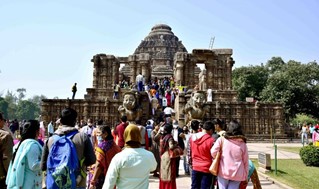
Quote:
“There are no passengers on Spaceship earth. We are all crew.”
Source:
Share the article
Get Latest Updates on Offers, Event dates, and free Mentorship sessions.

Get in touch with our Expert Academic Counsellors 👋
FAQs
UPSC Daily Current Affairs focuses on learning current events on a daily basis. An aspirant needs to study regular and updated information about current events, news, and relevant topics that are important for UPSC aspirants. It covers national and international affairs, government policies, socio-economic issues, science and technology advancements, and more.
UPSC Daily Current Affairs provides aspirants with a concise and comprehensive overview of the latest happenings and developments across various fields. It helps aspirants stay updated with current affairs and provides them with valuable insights and analysis, which are essential for answering questions in the UPSC examinations. It enhances their knowledge, analytical skills, and ability to connect current affairs with the UPSC syllabus.
UPSC Daily Current Affairs covers a wide range of topics, including politics, economics, science and technology, environment, social issues, governance, international relations, and more. It offers news summaries, in-depth analyses, editorials, opinion pieces, and relevant study materials. It also provides practice questions and quizzes to help aspirants test their understanding of current affairs.
Edukemy's UPSC Daily Current Affairs can be accessed through:
- UPSC Daily Current Affairs can be accessed through Current Affairs tab at the top of the Main Page of Edukemy.
- Edukemy Mobile app: The Daily Current Affairs can also be access through Edukemy Mobile App.
- Social media: Follow Edukemy’s official social media accounts or pages that provide UPSC Daily Current Affairs updates, including Facebook, Twitter, or Telegram channels.


